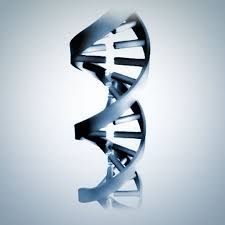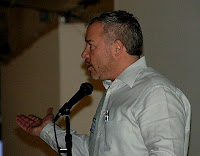Landfills: A prosperous life ending in a lonely death
With national and global corporate leaders committed to finding the next life for their used products along with the associated packaging, creative recycling programs are becoming common place. As companies understand the value in their "waste," recycling profit centers replace waste cost centers. The "waste rivers" feeding landfills a strong diet are destined to divert into profitable recycling streams. Death of landfills as we know them appears slow yet imminent.
Collaboration across industry sectors and innovation is key to recycling success, especially where consumer products are the focus.
 |
gimme 5 container @ ATL
Whole Foods |
The Preserve gimme 5 program is a perfect example of how companies from various industries partner together for effective recycling. At the program center, Preserve uses recycled #5 plastic as a raw manufacturing material for their personal care, tableware and kitchen products.
Gimme 5 partners Stonyfield Farm, who uses #5 plastic for their yogurt containers, and BRITA , whose filters are made with #5 plastic, care about the continuing life of their products and packaging. A final puzzle piece is a convenient way for the consumer to recycle their yogurt containers, BRITA filters and other #5 plastic products.
Ta Da - Whole Foods completes the spiral by providing fun collection boxes at their stores for consumer #5 plastic drop-off. Once full, Whole Foods ships the box to Preserve for the plastic to continue its valuable life cycle. The ZWA Blog post, gimme 5 recycling @ Whole Foods, gives a detailed program overview.
Important note: the Preserve site product page says " We make our products out of recycled #5 plastic that can in turn be recycled." YEA!!!!
When reviewing products made from recycled material, dig a bit deeper to ensure these new products are recyclable. There are many products made from recycled material - reusable shopping bags are a prime example - that are landfill destined once spent. The goal is beyond extending the end-of-life to creating a perpetual spiral-of-life. Spiral is used, instead of circle, to denote how the material make take many different forms as it travels the recycling path.
 |
| Starbucks #5 plastic cold cup |
Starbucks is another company investing major resources into HOW their famous cups may continue in a spiral-of-life cycle. Initiating the Starbucks Cup Summit, director of environmental impact Jim Hanna brings together companies and organizations within the entire cup value-chain to explore how technology, innovation and collaboration may unfold solutions for extending the cup life. The beauty is Starbucks invites their direct competitors to join in the exploration process.
The March 23 New York Times article Companies Pick-Up Used Packaging and Recycling Costs gives a fantastic overview of the community and corporate climate with respect to extended product responsibility. Starbucks is central in the article and includes the following Jim Hanna quote: "More environmentally conscious consumers are demanding that companies share their values, too... companies are becoming more aware that resources are limited and what they've thrown away - wow, it has value."
 |
A spiral is indicative of growth &
mirrors our DNA
image from Next Wave |
What thrilling times! Humanity is awakening from an indulgent slumber with challenging side effects. Let's embrace the indulgence without judgment as solutions are found in the flow of open hearts.
Focus on the leaders, individuals and corporations, committed to creating a Perpetual Spiral of Life for our valuable resources. Remember death is always followed by birth - we are in the process of birthing a civilization where technology-based solutions mirror nature's perfect regeneration processes.
We can and ARE creating a sustainable, beautiful world for our children!
 The Zero Waste Zones - National Zone welcomes two award-winning participants! Each participant is a pioneer in their respective industries with zero waste designation achieved in their operations. By joining the ZWZ, these companies are committed to refining their existing recycling practices and serving as industry leaders sharing their lessons learned & successes.
The Zero Waste Zones - National Zone welcomes two award-winning participants! Each participant is a pioneer in their respective industries with zero waste designation achieved in their operations. By joining the ZWZ, these companies are committed to refining their existing recycling practices and serving as industry leaders sharing their lessons learned & successes.













